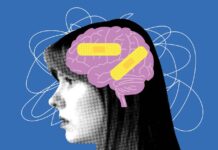Lower back pain is a common issue affecting millions of people worldwide. It’s a condition that can significantly impact one’s quality of life, making everyday tasks challenging. Jordan Sudberg‘s recent study on interventional pain treatment for chronic lower back pain highlights various effective methods that do not involve invasive procedures.
The primary goal is to relieve pain, improve function, and enhance the quality of life. By examining these options, individuals can discover the treatments that best align with their needs and lifestyles.
1. Physical Therapy
Physical therapy is often the first line of defense against lower back pain. It involves various exercises tailored to the individual’s specific condition and needs. These exercises can strengthen the muscles around the spine, improve flexibility, and enhance posture, all of which can help reduce pain and prevent future episodes.
Physical therapists can also provide education on body mechanics to avoid movements that exacerbate pain. They use techniques such as stretching, strength training, and aerobic exercises. Each session is designed to gradually increase the intensity of exercises, ensuring that patients do not overexert themselves while building up their strength and endurance.
2. Pain Management through Medication
Over-the-counter pain relievers, such as ibuprofen or acetaminophen, can be effective in managing lower back pain. These medications help reduce inflammation and alleviate discomfort. For more severe pain, doctors might prescribe stronger medications, including muscle relaxants or prescription pain relievers.
It’s crucial to use these medications as directed by a healthcare professional to avoid potential side effects and dependency. Medication can be a temporary solution, helping individuals manage pain while they engage in other non-invasive treatments.
3. Heat and Cold Therapy
Applying heat or cold to the affected area can relieve lower back pain immediately. Cold therapy can reduce inflammation and numb the painful area, making it particularly effective right after an injury. Heat therapy, however, can relax tight muscles and improve blood flow to the area, promoting healing.
Alternating between heat and cold therapy can also be beneficial. This approach can reduce stiffness, enhance flexibility, and provide overall comfort. It is a simple, non-invasive method that can be used at home.
4. Lifestyle Modifications
Certain lifestyle changes can significantly impact managing lower back pain. These include maintaining a healthy weight, as excess weight can put additional strain on the lower back. Regular physical activity, such as walking, swimming, or yoga, can help keep the back muscles strong and flexible.
Ergonomics also plays a vital role. Ensuring that your work environment is back-friendly, using supportive seating, and practicing good posture can prevent the recurrence of back pain. Additionally, quitting smoking can improve overall health and reduce back pain, as smoking can restrict blood flow and oxygen to spinal tissues.
5. Chiropractic Care
Chiropractic care involves spinal manipulation and adjustment to alleviate pain and improve function. Chiropractors use hands-on techniques to adjust the spine, which can help reduce pain and improve mobility. These adjustments can relieve pressure on nerves, reduce inflammation, and promote natural healing.
Patients often report immediate relief after chiropractic sessions. Regular visits can help maintain spinal health and prevent future episodes of lower back pain. It is a popular non-invasive treatment that has helped many individuals find relief.
6. Acupuncture
Acupuncture is an ancient Chinese practice that involves inserting thin needles into specific points on the body. This technique balances the body’s energy flow and stimulates natural healing processes. For lower back pain, acupuncture can provide significant relief by reducing pain and improving function.
Many studies have shown that acupuncture can be an effective treatment for chronic lower back pain. It is a safe, non-invasive option that can be used with other treatments to enhance overall pain management.
The Bottom Line
A variety of noninvasive treatments are available to find relief from lower back pain without invasive procedures. Physical therapy, medication, heat and cold therapy, lifestyle modifications, chiropractic care, acupuncture, and mind-body techniques all offer effective ways to manage and reduce pain. By exploring these options, individuals can find the right combination of treatments that work best for their specific condition, improving their quality of life and overall well-being.







